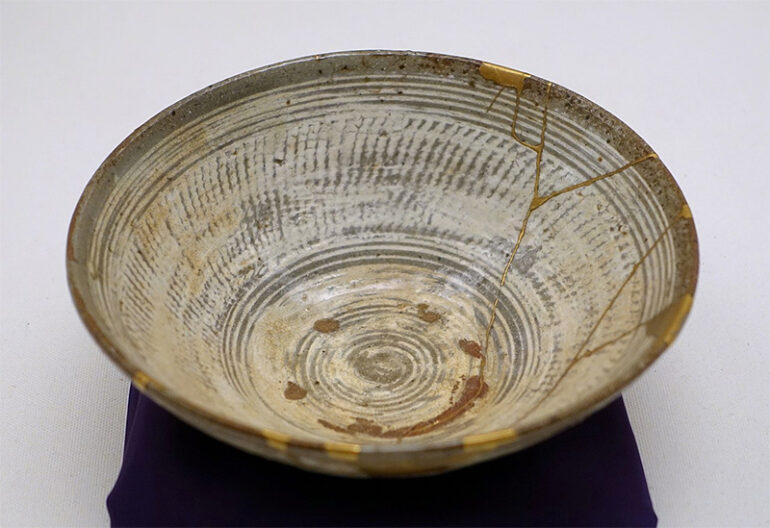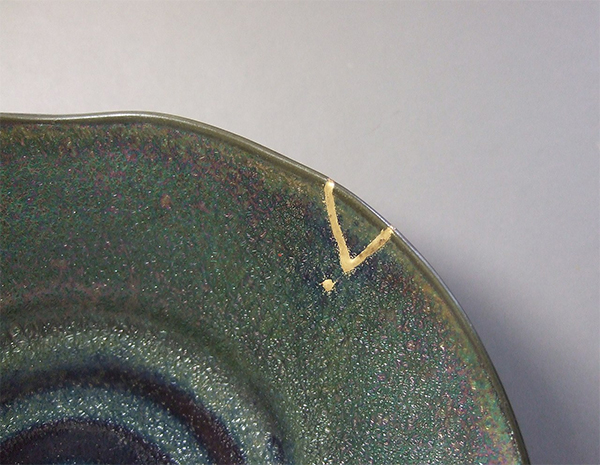Kintsugi, an ancient Japanese art form, has enthralled people all over the world with its profound philosophy and exquisite craftsmanship. This 15th-century method of mending shattered pottery with precious metals embraces imperfection and its transformative power. By carefully joining fractured pieces with gold, silver, or platinum, Kintsugi creates a visual tale of strength and time. This ancient art form inspires artists and connects with people all around the world, reminding us of the beauty of the mended and flawed.
Origins and History of Kintsugi
Kintsugi, a captivating art form rooted in ancient Japanese culture, traces its origins back to the 15th century. Derived from the words “kin” meaning gold and “tsugi” meaning joinery, this technique involves repairing broken pottery with a special adhesive mixed with gold, silver, or platinum. The philosophy behind Kintsugi goes beyond mere restoration; it embraces the concept of embracing flaws and imperfections as part of an object’s history. By highlighting the mended cracks with precious metals, Kintsugi transforms brokenness into beauty, creating a visual narrative of resilience and the passage of time. This traditional art form continues to captivate individuals worldwide, as it serves as a powerful metaphor for embracing imperfections in our own lives.
The Philosophy and Symbolism behind Kintsugi
Kintsugi, beyond its aesthetic appeal, encompasses a profound philosophy and symbolism. It teaches us to embrace the beauty of imperfection and the transient nature of existence. By repairing broken pottery with precious metals, Kintsugi celebrates the flaws and scars as integral parts of an object’s story. It encourages us to view our own experiences of pain and adversity as opportunities for growth and transformation. This art form reminds us that even after being broken, we can heal and become more beautiful, resilient, and valuable. Kintsugi serves as a powerful metaphor for the human journey, reminding us to find strength and beauty in our own brokenness.
The Kintsugi Process and Techniques
The Kintsugi process involves meticulous craftsmanship and specific techniques that have been passed down through generations. First, the broken pieces of pottery are carefully collected and cleaned. Then, a special lacquer mixed with gold, silver, or platinum is applied to the cracks, allowing the adhesive to bond the fragments together. The repaired piece is then left to dry and harden. Once the lacquer sets, skilled artisans meticulously polish the surface, ensuring a smooth and seamless finish. This delicate and time-consuming process requires precision and patience, as each step is crucial in achieving the desired result of a beautifully restored object with golden veins tracing its once broken lines.
Kintsugi in Modern Times and its Global Influence
Kintsugi has recently garnered popularity across the world. Its message of embracing imperfections and finding beauty in brokenness resonated with people all around the world. Kintsugi has inspired designers to use it into furniture, jewelry, clothing, and ceramics. This ancient art form represents perseverance, attentiveness, and acceptance of life’s inevitabilities. In a fast-paced, throwaway culture, Kintsugi stresses craftsmanship, sustainability, and the beauty of the healed and damaged.
Kintsugi’s rich history and profound philosophy draw visitors from all over the world. This ancient art form teaches us to accept flaws, find beauty in imperfection, and learn from adversity. Kintsugi transforms shattered ceramics into exquisite works of art that represent endurance and time. Kintsugi has influenced artists and designers all over the world to apply its ideals to different mediums. Kintsugi celebrates craftsmanship, sustainability, and the beauty of the imperfect to represent persistence and the fortitude of conquering life’s obstacles.
Photo Attribution:

